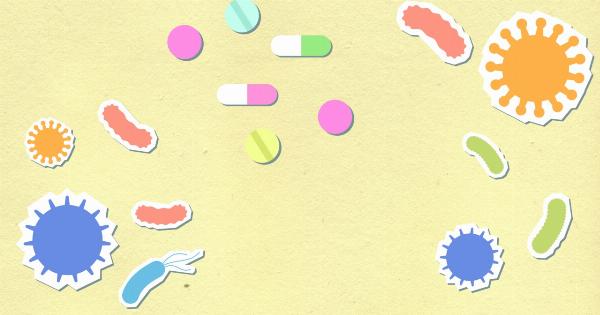Gaucher’s disease, also known as glucocerebrosidase deficiency, is a rare genetic disorder that affects the body’s ability to break down a fatty substance called glucocerebroside.
This build-up of glucocerebroside primarily occurs in the cells of the liver, spleen, and bone marrow, causing a range of symptoms and complications. Understanding the causes, symptoms, and treatment modalities of Gaucher’s disease is crucial in providing suitable care for individuals affected by this condition.
Causes of Gaucher’s Disease
Gaucher’s disease is an autosomal recessive disorder, meaning that both parents must pass on a defective gene for a child to develop the condition.
The disease is caused by mutations in the GBA gene, which provides instructions for producing the enzyme glucocerebrosidase. When this enzyme is deficient or defective, glucocerebroside accumulates in cells, leading to the symptoms of Gaucher’s disease.
Types of Gaucher’s Disease
There are three main types of Gaucher’s disease, classified based on the presence and severity of neurological involvement:.
1. Type 1 Gaucher’s Disease: This form is the most common and typically does not affect the central nervous system. It primarily affects the liver, spleen, bones, and bone marrow.
2. Type 2 Gaucher’s Disease: This severe form involves neurological complications and affects the central nervous system. Symptoms often manifest in infancy and progress rapidly.
3. Type 3 Gaucher’s Disease: This form also involves neurological complications but progresses more slowly than Type 2. Symptoms may vary in severity and can appear in childhood or adolescence.
Symptoms of Gaucher’s Disease
The symptoms of Gaucher’s disease can vary widely depending on the type and severity of the condition. Some common symptoms include:.
1. Enlarged liver and spleen: The accumulation of glucocerebroside in these organs may cause them to enlarge, leading to abdominal pain and a feeling of fullness.
2. Anemia and fatigue: Gaucher’s disease can impair the body’s ability to produce healthy red blood cells, resulting in anemia and fatigue.
3. Bone pain and fractures: The excessive storage of glucocerebroside in the bones can lead to bone pain, increased susceptibility to fractures, and the development of osteoporosis.
4. Easy bruising and bleeding: Reduced platelet count, a common feature of Gaucher’s disease, can lead to easy bruising and prolonged bleeding.
5. Gaucher cells: Specialized cells called Gaucher cells may accumulate in various organs and tissues, causing damage and dysfunction.
Diagnosis
Diagnosing Gaucher’s disease typically involves a combination of clinical evaluation, family history assessment, and laboratory tests. Some commonly used diagnostic methods include:.
1. Blood tests: These tests can measure the activity of the glucocerebrosidase enzyme and the presence of Gaucher cells.
2. Genetic testing: Identifying mutations in the GBA gene can confirm a diagnosis and determine the specific type of Gaucher’s disease.
3. Imaging tests: X-rays, MRI, and CT scans can help identify organ enlargement, bone abnormalities, and signs of bone damage.
4. Bone marrow biopsy: A small sample of bone marrow is examined to identify the presence of Gaucher cells.
Treatment Modalities
While there is currently no cure for Gaucher’s disease, various treatment modalities can help manage symptoms, slow disease progression, and improve quality of life:.
1. Enzyme replacement therapy (ERT): The primary treatment for Gaucher’s disease involves intravenous infusions of a synthetic enzyme that breaks down glucocerebroside.
ERT can reduce organ enlargement, improve blood counts, and alleviate some symptoms.
2. Substrate reduction therapy (SRT): SRT aims to decrease the production of glucocerebroside, thereby reducing its accumulation in cells. SRT medications can help manage symptoms and slow disease progression.
3. Bone marrow transplant: In severe cases, a bone marrow transplant may be recommended to replace defective cells with healthy ones.
This procedure can potentially cure Gaucher’s disease, but it carries significant risks and is usually reserved for severe cases.
4. Symptom management: Medications and treatments may be prescribed to manage specific symptoms, such as pain relievers for bone pain, blood transfusions for anemia, and bisphosphonates for osteoporosis.
5. Supportive care: Physical therapy, occupational therapy, and counseling play crucial roles in providing support and improving the quality of life for individuals with Gaucher’s disease.
Research and Future Prospects
Ongoing research into Gaucher’s disease aims to improve treatment options and develop potential cures.
Scientists are exploring new enzyme replacement therapies, gene therapies, and targeted therapies to address the underlying genetic mutations and restore normal enzyme function. These advancements offer promising possibilities for individuals affected by Gaucher’s disease.
Conclusion
Gaucher’s disease is a complex genetic disorder that affects multiple organs and systems in the body.
Understanding its causes, recognizing the diverse range of symptoms, and employing appropriate treatment modalities are crucial in managing the disease and improving the quality of life for individuals with Gaucher’s disease. Ongoing research in this field provides hope for better treatment options and potential cures in the future.






























